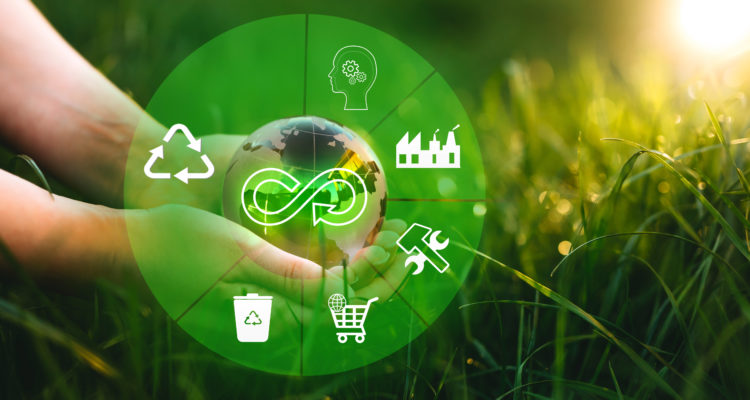Climate change and its effects are a frequent topic in the news media, but the coverage isn’t merely theoretical. Companies are under increasing pressure to adopt sustainable business practices. If composites manufacturers haven’t yet heard from customers requesting information on how they are addressing climate change, they will soon.
Responding to federal and state regulations, as well as pressure from investors and other stakeholders, organizations from automakers to state Departments of Transportation (DOTs) are asking suppliers to reduce the emission of climate-warming gases and improve the resilience of products in the face of climate change. And while the focus today is on climate change, our industry will also be expected to assess and act to reduce other sustainability impacts, such as the generation of waste (in the form of solid waste, discharge to water and emissions to the air of volatile organic compounds and particulate) and the use of potentially toxic substances.
Making composites the sustainable material of choice is a focus of ACMA’s newly revised strategic plan. Under the plan, ACMA’s Climate Impact Project (CIP) will provide member companies with education and resources to succeed in a sustainability driven marketplace for structural materials. Development of the components of the CIP (shown in Figure 1) will be completed by mid-2023.
Cradle-to-Gate Climate Impacts
Successfully participating in today’s marketplace requires suppliers to provide assessments of the climate impacts associated with the manufacture of their products and raw materials. These cradle-to-gate life cycle assessments (LCA) are needed by end users like automakers and state DOTs so these organizations can assess their own cradle-to-gate (or cradle-to-grave) impacts.
Developing an LCA for a product is the first step in the process of decarbonization, followed by reducing the product’s cradle-to-gate impacts.
Many large companies have announced plans to move toward climate neutral or carbon net zero supply chains. The federal government is pressing recipients of grants or loans for products like highway bridges and water treatment systems and suppliers of products directly to the government such as cars and aircraft to move toward low carbon materials.
An LCA identifies the source of climate impacts associated with the manufacture of a product and raw materials and provides a baseline against which to measure progress in reducing those impacts. Manufacturers of composite products for most markets will have to invest in the routine preparation of LCAs for their products. ACMA’s CIP will include tools and guidance to make the process of developing LCAs more understandable, reliable and cost efficient for composites manufacturers.
ACMA completed a Life Cycle Inventory Report in 2012 that illustrates how an LCA can identify opportunities for a composites manufacturer to reduce cradle-to-gate climate impacts. For example, the report indicates the largest amount of climate impact for a typical open molded product is associated with the resin used to make the product. (The emission of significant quantities of climate warming gases associated with resin production is driven largely by the high-temperature steam cracking of hydrocarbons to produce the small reactive molecules used as building blocks in the production of polymers.) For a typical compression molded product, the process energy (electricity) needed to heat dies, operate presses and produce molding compound accounts for the largest share of the climate impact.
Composites manufacturers will have to work with suppliers to identify raw materials or processes with reduced climate impacts. Companies should also collaborate with providers of electricity, natural gas and other energy sources to evaluate the availability of energy streams associated with reduced climate impacts. For example, most electric utilities can already provide power from renewable sources, such as wind or hydropower, at a price premium.
Use-Phase Benefits
The sustainability landscape isn’t all doom-and-gloom for the composites industry. Replacing traditional materials with composites brings important sustainability benefits – high strength, low weight, corrosion resistance, durability. And then there are the important products that would not be possible without composites, such as wind turbine blades.
But what about climate change? Does the use of composites instead of traditional materials reduce the emission of climate warming gases?
There have been some efforts to quantitatively demonstrate that this is true, and composites do provide some benefit, but overall the results are not very compelling. These comparative analyses heavily depend on assumptions about the extent of the system – the exact design, construction, use and end-of-life disposal practices, as well as the assumed lifespan of the materials and assembled end-use product. And it is not clear how to account for benefits that occur in the future, such as not needing to replace a composite-reinforced bridge deck at 75 years when a steel-reinforced deck would need to be replaced.
It may be more important to educate infrastructure users and product consumers about the hard-to-quantify social advantages of composites. For example, people living in storm- or wildfire-prone areas could be informed about the resilience of composite utility poles. Similarly, communities with highway bridges needing extensive maintenance or replacement could be informed that the resulting traffic disruption, inconvenience and economic loss can be avoided if composites are used to reconstruct or replace the bridges.
Increasing awareness of the use-phase sustainability benefits of composite products supports the industry advancing toward a circular economy and the consequent reduction of certain business risks.
Reducing the Risks of a Linear Economy
According to a widely accepted analysis advanced by the Ellen MacArthur Foundation, our national economy is dominated by a linear model of production and consumption, in which goods are manufactured from raw materials, sold, used and then discarded as waste. By contrast a circular economy is designed to be restorative and regenerative and aims to keep products, components and materials at their highest utility and value.


